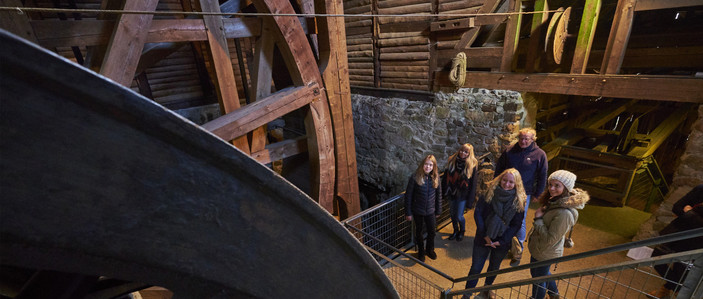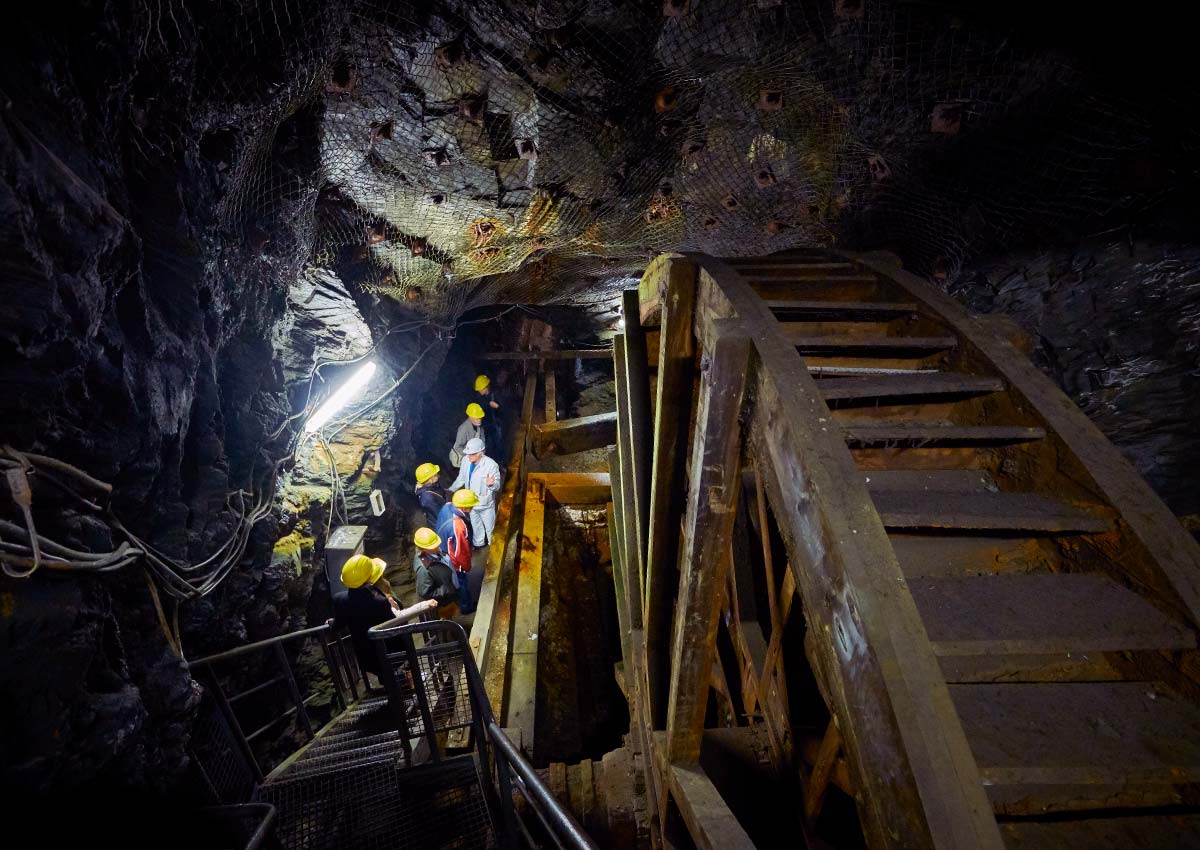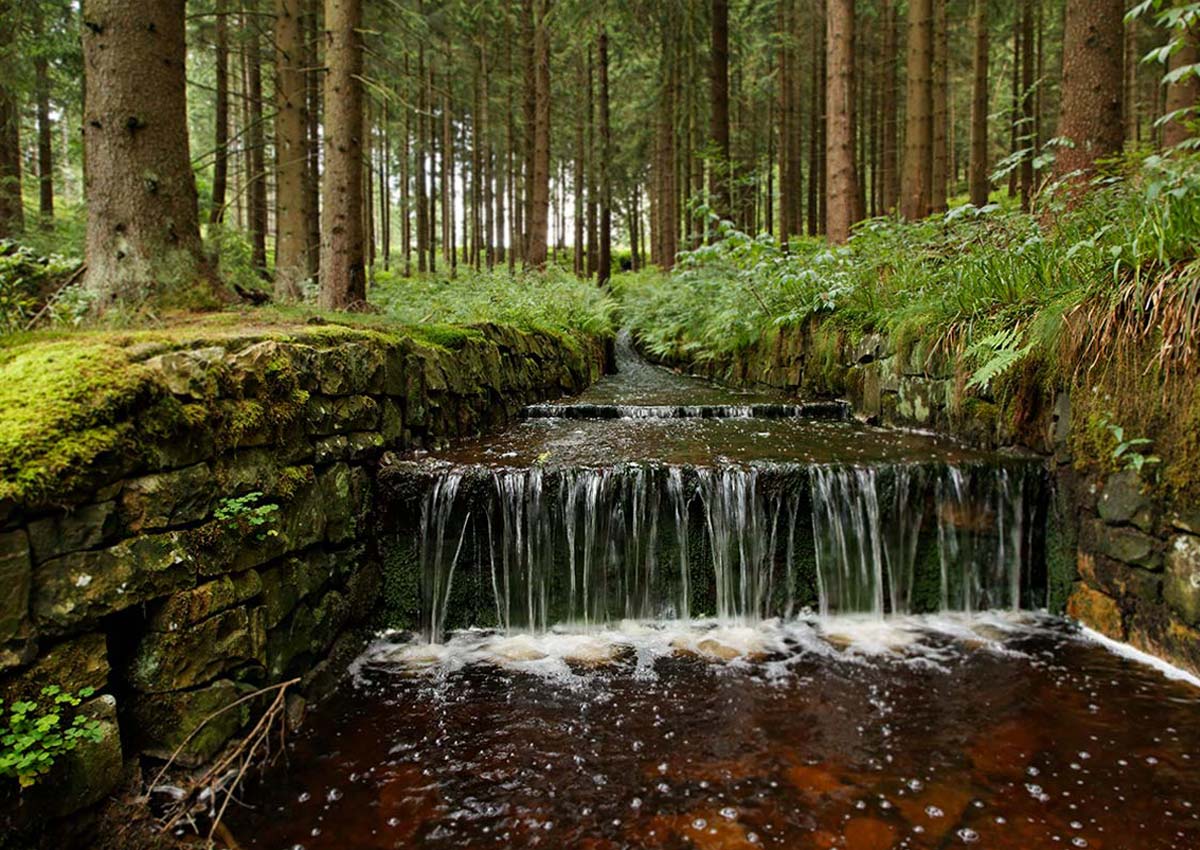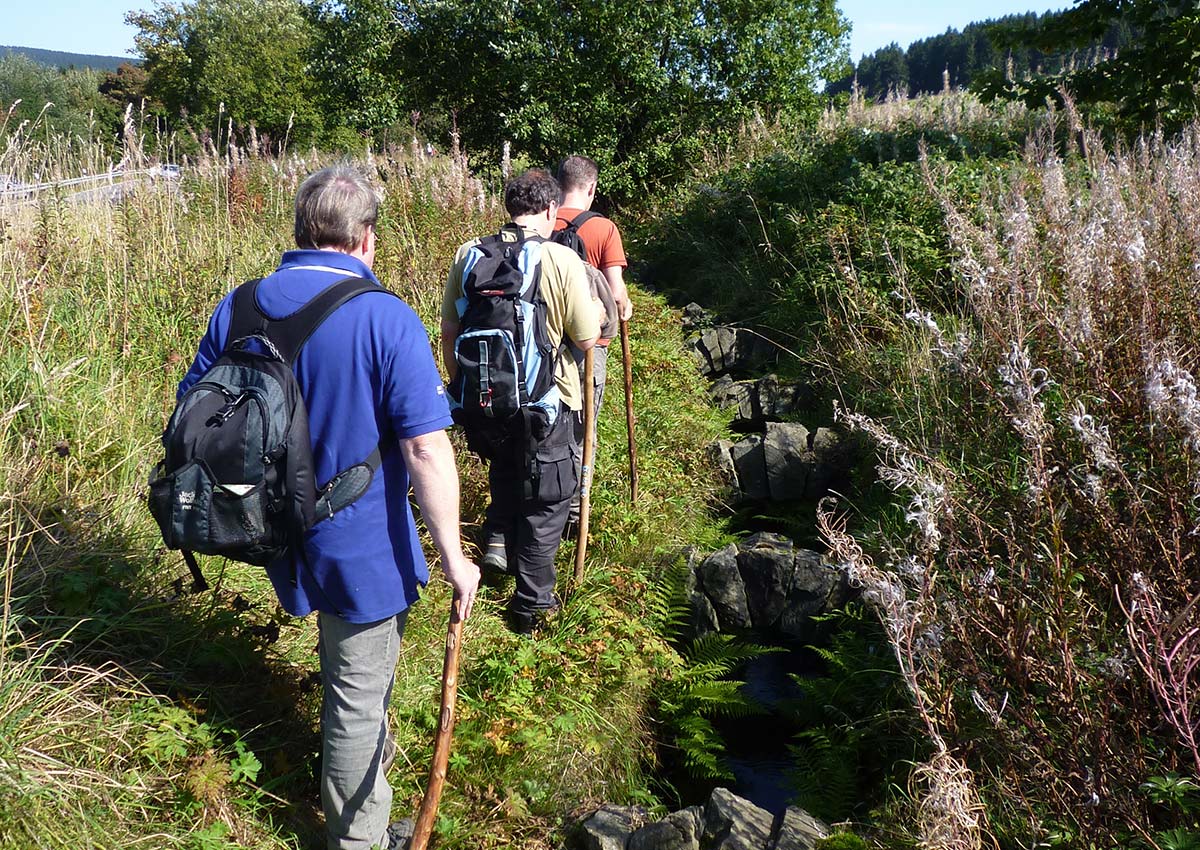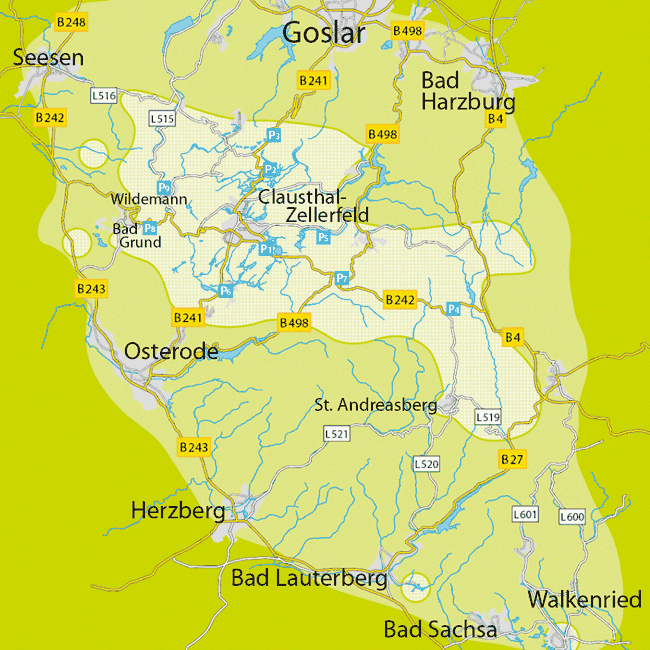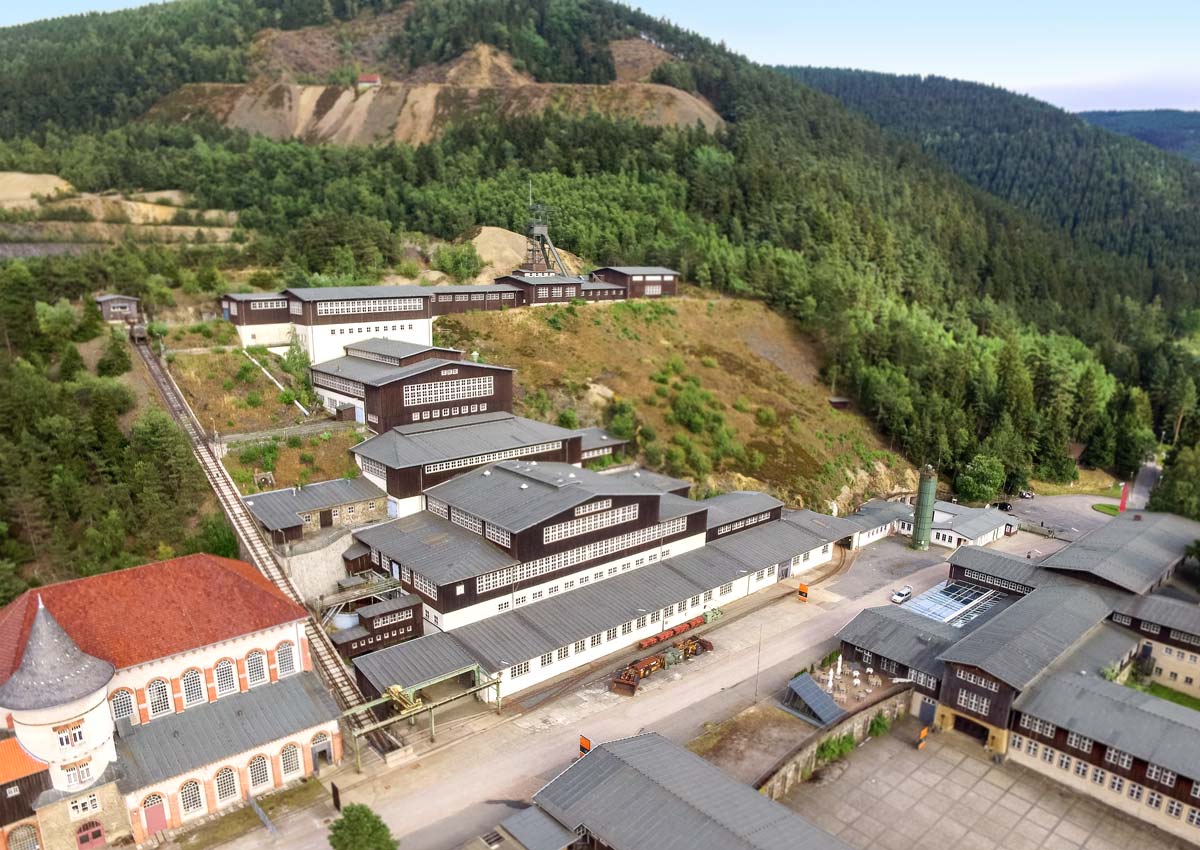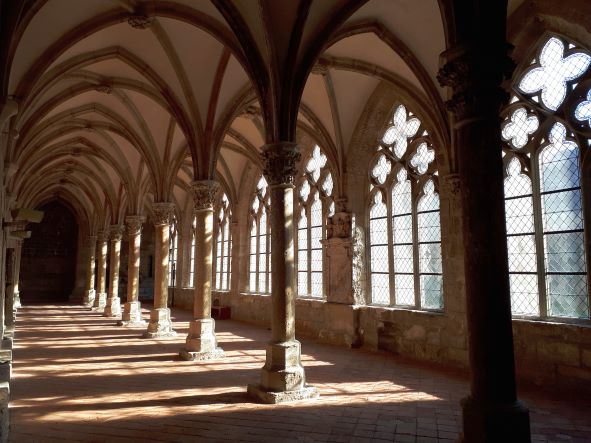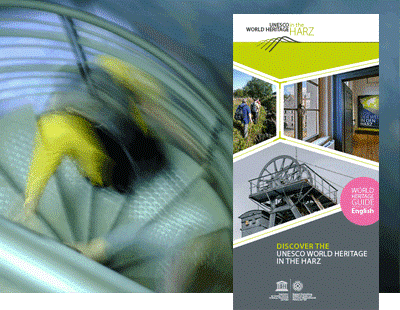Energy production –
using water to keep the mines working
Ever-deeper ore mines and complex smelting processes consumed more and more energy from water and wood. It was not only deforestation and reforestation that affected the natural landscape.
For a long time, the highest-yielding mines and the deepest shafts in the world could be found in the Harz. To supply them with energy, an ingenious and innovative system of ditches, ponds, water wheels and pumping stations was created: the Upper Harz Water Management System. It was once the largest pre-industrial energy supply system and became UNESCO World Heritage in the year 2010. Right up to 1980 the Upper Harz Water Management System produced electrical energy for the remaining mines of the company PREUSSAG, the Rammelsberg Mine in Goslar and the Hilfe Gottes Mine in Bad Grund.
Many of the installations in the Upper Harz and at the Rammelsberg still carry water today. They document a regenerative energy supply system developed over eight centuries – from the Middle Ages to the present. In no other mining area of the world have such complex water management constructions, storage and distribution systems been created over such a long period of time and maintained for the future.
The short video above introduces the theme "Energy production" in some illustrative scenes.
These energy production systems in the Upper Harz can still be understood and appreciated today on a guided tour passing by ponds, ditches and water tunnels.
Our colleagues from the Harz Tourist Association developed this interesting explanatory film on the Upper Harz water management system. (German Audio)

